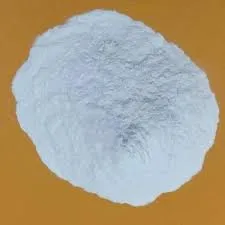
ოქტ . 02, 2024 01:02 Back to list
Viscosity Analysis of HPMC Grades for Optimal Formulation Development
Understanding the Viscosity of HPMC Grades
Hydroxypropyl Methylcellulose (HPMC) is a versatile cellulose ether extensively used in various industries, including pharmaceuticals, food, cosmetics, and construction. One of the critical characteristics of HPMC is its viscosity, which plays a significant role in determining its functionality and application. This article aims to provide an overview of HPMC grades and their viscosity, highlighting how these properties impact their use in different sectors.
What is HPMC?
HPMC is a semi-synthetic polymer derived from cellulose, modified to enhance its solubility and performance in water. The degree of substitution (DS) of hydroxypropyl and methyl groups affects the properties of different HPMC grades, including their viscosity. Viscosity is a measure of a fluid’s resistance to flow, and in the context of HPMC, it relates to how the polymer behaves in solution, impacting its thickening, binding, and film-forming properties.
Different Grades of HPMC
HPMC is available in various grades, each with distinct physical and chemical characteristics. These grades are typically categorized based on the viscosity they impart to solutions at specific concentrations. The viscosity of HPMC can range from very low (less than 100 mPas) to high (over 100,000 mPas), indicating a broad spectrum of applications.
1. Low Viscosity Grades These grades, such as HPMC K4M, are ideal for applications requiring low thickening power. They are often used in products like coatings and certain types of adhesives where a thin, fluid consistency is preferred.
2. Medium Viscosity Grades Grades like HPMC K15M provide a balance between thickening and flow properties, making them suitable for a variety of applications, including cosmetic formulations, where a moderate viscosity is required for stability and texture.
3. High Viscosity Grades HPMC grades such as K100M are characterized by their ability to create highly viscous solutions, making them essential in applications like suspensions and gels, where a high degree of stability is necessary to prevent sedimentation.
hpmc grades viscosity

The Importance of Viscosity in Applications
Viscosity plays a crucial role in determining the performance of HPMC in various formulations. In pharmaceuticals, for example, the viscosity of HPMC affects the release rate of active ingredients from drugs. High-viscosity grades can create sustained-release formulations, whereas low-viscosity grades may facilitate immediate release.
In the food industry, HPMC is often used as a thickener or stabilizer. Here, the viscosity must be carefully controlled to achieve the desired mouthfeel and texture while ensuring that the product remains stable over time. The ability to tailor the viscosity to specific needs allows food manufacturers to create products with consistent quality.
In construction, HPMC is used in tile adhesives and cement-based materials. The viscosity of HPMC influences the workability and adhesion properties of these materials. Higher viscosity grades improve the spreadability and water retention in mortars, ensuring better performance and durability of the final products.
Factors Affecting Viscosity
The viscosity of HPMC solutions can be influenced by several factors, including concentration, temperature, and the presence of other ingredients or additives. Higher concentrations of HPMC typically result in increased viscosity due to the greater number of polymer chains interacting in solution. Temperature can also impact viscosity, as higher temperatures generally lead to lower viscosity, facilitating easier application.
Conclusion
Understanding the viscosity of different HPMC grades is essential for optimizing their use across various applications. By selecting the appropriate grade and concentration, manufacturers can leverage the unique properties of HPMC to enhance their products, whether in pharmaceuticals, food, cosmetics, or construction. As industries continue to evolve, the demand for tailored viscosity solutions will only increase, underscoring the significance of HPMC in contemporary formulations.
-
Versatile Hpmc Uses in Different Industries
NewsJun.19,2025
-
Redispersible Powder's Role in Enhancing Durability of Construction Products
NewsJun.19,2025
-
Hydroxyethyl Cellulose Applications Driving Green Industrial Processes
NewsJun.19,2025
-
Exploring Different Redispersible Polymer Powder
NewsJun.19,2025
-
Choosing the Right Mortar Bonding Agent
NewsJun.19,2025
-
Applications and Significance of China Hpmc in Modern Industries
NewsJun.19,2025







